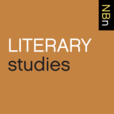Beth Driscoll, "The New Literary Middlebrow: Readers and Tastemaking in the Twenty-First Century"

Summary: Beth DriscollView on Amazon[Cross-posted from New Books in Critical Theory] It is a cliche to suggest we are what we read, but it is also an important insight. In The New Literary Middlebrow: Readers and Tastemaking in the Twenty First Century (Palgrave-MacMillan, 2014), Beth Driscoll, from University of Melbourne, extends and critiques the work of Pierre Bourdieu to account for modern literary tastes and the literary field in which those tastes are embedded. The book attempts to explore and defend the idea of the middlebrow in literature. 'Middlebrow' is defined by eight characteristics, whereby it is middle class, it has reverence to elite cultures, and it is entrepreneurial, mediated, feminised, emotional, recreational and earnest. In the main it is situated within the tension between the aesthetic and the commercial. The book uses four case studies to explore how this tension, along with the idea of the middlebrow, plays out. In the first case study the role of Oprah Winfrey as a tastemaker and cultural intermediary is explored as part of an analysis of book clubs. The analysis shows how Oprah's book club was important in establishing markets for books as well as being a site for the struggle over what is, and what is not, legitimate taste. This legitimacy is tied to elements of the middlebrow aesthetic, which has earnestness and self improvement as an important component. This component is both the source of struggle with more elite elements of the literary field and a source of changing reading practices, for example in the way Harry Potter is used in schools. The final two case studies, of book prizes and literary festivals, add to the defence of the middlebrow as a vital form of aesthetic production and cultural consumption for both understanding the future of reading and the future of the market for literature in the era of social media.
